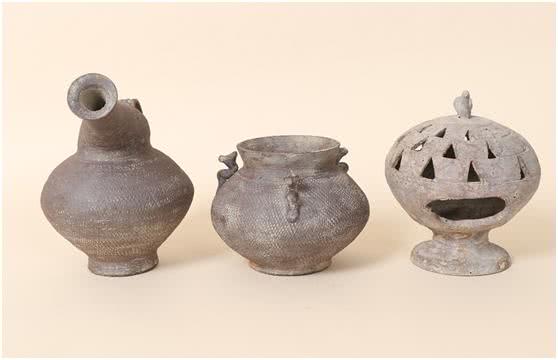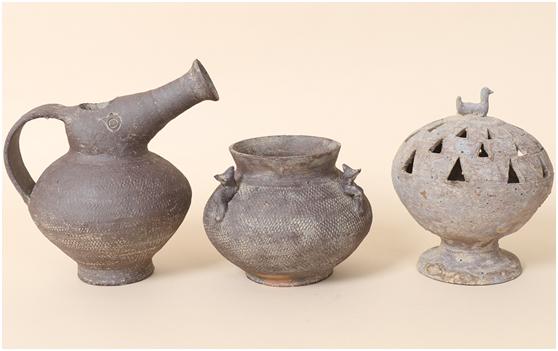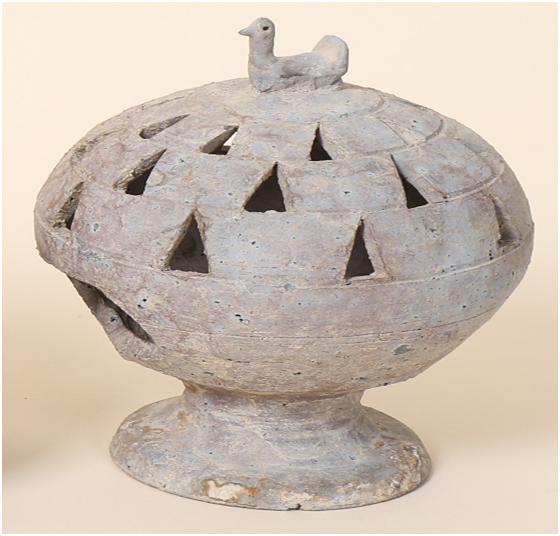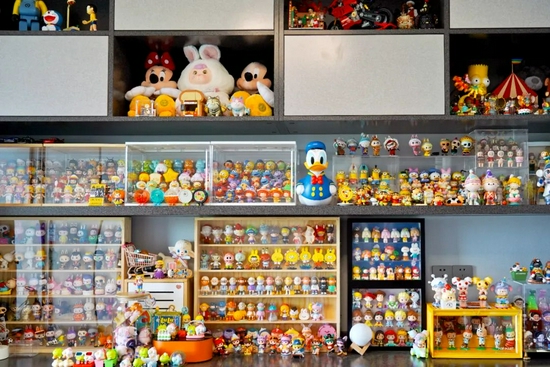顶级推荐 江西私人收藏家周先生高古陶器寻实力买家
近日公司有幸征集到江西私人收藏家周先生的藏品、该藏品经公司权威专家老师鉴定为春秋战国陶器一组、胎质较粗,叩之有金石之声,釉色比陶光亮,与同期印纹硬陶的装饰风格极为类似,此藏品在如今的艺术界凤毛麟角、极其罕见。
Recently, the company had the honor to collect the collection of Mr. Zhou, a private collector in Jiangxi Province, which was identified by the company's authoritative experts and teachers as a group of pottery in the Spring and Autumn Period and Warring States Period. The quality of the collection was thick, with the sound of stone and stone, and the glaze color was brighter than that of pottery, which is very similar to the decorative style of hard pottery with printed grain in the same period. This collection is rare and extremely rare in today's art world.
原始瓷器是在制陶技术的基础上发展而来的。瓷器的原始阶段制品。一种用含铁量在2%左右的粘土成型,经过人工施釉,有1200℃左右的高温烧成的青釉制品。这类器物在五十年代前尚未被人们认识。一度曾有“釉陶”、“青釉器”等不同名称。现国内外陶瓷界多数人已同意用“原始瓷器”命名,但也有少数人仍沿用“釉陶”,国外亦有称为炻器的。器物大多是尊、罍、簋、壶、匜、盂、豆、罐、鼎、杯等盛器,至春秋、战国时期也有一部分钟、錞于等仿青铜礼器。
Primitive porcelain was developed on the basis of pottery making technology. The original stage of porcelain. A green glaze product is formed from clay with iron content of about 2 % and sintered at high temperature of about 1200 ℃ after artificial glazing. This kind of utensil was not known before the 1950s. At one time there were different names such as " glazed pottery" and " glazes". At present, most people in the ceramic industry at home and abroad have agreed to use the name " primitive porcelain", but some still use " glazed pottery" and some are called stoneware abroad. Most of the utensils are bronze vessels such as Zun, Zhen, Gui, Pot, Qi, Jar, Bean, Pot, Ding, Cup, etc. There were also some bronze ritual vessels such as Zhong and Zhu in the Spring and Autumn Period and Warring States Period.
原始瓷制坯的原料多数不做处理,胎质较粗,制作时通常采用泥条盘筑的方法,辅助手工捏或者轮制,器形不规整,胎体厚薄不匀,器物内外施有薄釉,釉色有青、青黄、青绿、黄绿、绿褐、茶黄等;常见的纹饰有方格纹、篮纹、叶脉纹、锯齿纹、弦纹、席纹、圆圈纹以及绳纹,与同期印纹硬陶的装饰风格极为类似。原始瓷的胎骨比陶器细腻坚硬,叩之有金石之声,釉色比陶光亮,施在器表和口沿部分。到了东汉时期,原始瓷逐渐被成熟的青瓷取代,由此我国开始出现了现在人们所说的瓷器,这时的瓷器采用瓷石或高岭土作胎体坯料,用1180℃以上的温度烧成,胎体施釉,釉胎结合紧密。
Most of the raw materials for making the original porcelain blank are not treated and the quality of the embryo is relatively thick. During the production, the method of clay strip coiling is usually used to assist hand kneading or rotating, the shape of the ware is irregular, the thickness of the carcass is uneven, thin glaze is applied inside and outside the ware, and the glaze colors are green, bluish yellow, bluish green, yellowish green, greenish brown, tea yellow, etc. The common patterns are checkered, basket, vein, sawtooth, string, mat, circle and rope, which are very similar to the decorative style of hard pottery printed in the same period. The bone of the original porcelain is finer and harder than pottery, with the sound of stone and stone knocking, and the glaze is brighter than pottery and applied to the surface of the utensil and along the mouth. By the Eastern Han Dynasty, the original porcelain was gradually replaced by mature celadon, thus China began to appear what people now call porcelain. At this time, porcelain was made of porcelain stone or kaolin, fired at a temperature of 1180 ℃ or higher, the porcelain body was glazed, and the glaze was closely bonded.
此藏品为“春秋战国时期陶器一组”虽然古陶不会说话,但它开出的艺术之花却吸引着全世界的收藏者争相观赏、采摘,这些曾经让人“不屑一顾”的坛坛罐罐如今成了收藏新宠。
This collection is " a group of pottery in the spring and autumn period and the warring States period". although the ancient pottery can't speak, its artistic flowers attract collectors from all over the world to watch and pick them. these once - contemptible jars and jars have become a new favorite.
地址:广东省珠海市香洲区人民西路777号敦煌大厦八楼
自古以来,我国社会崇尚厚葬,陶器可久藏不朽,成了的陪葬品,有模型房舍、乐器、鸟兽、以及人俑,秦汉时期的兵马俑最为有名,最近陆续出土狻为考古学者重视。
使用俑代替活人陪葬,春秋时期已经盛行,孔子《论语》当中就有“始作俑者,其无后呼”的表述。秦兵马俑则到达了顶峰,兵马俑多用模塑结合的方法制成,先用陶模作出初胎,再覆盖一层细泥进行加工刻划加彩,有的是先烧后接,有的是先接再烧,火候均匀、色泽单纯、硬度很高。
查看原文 >>












